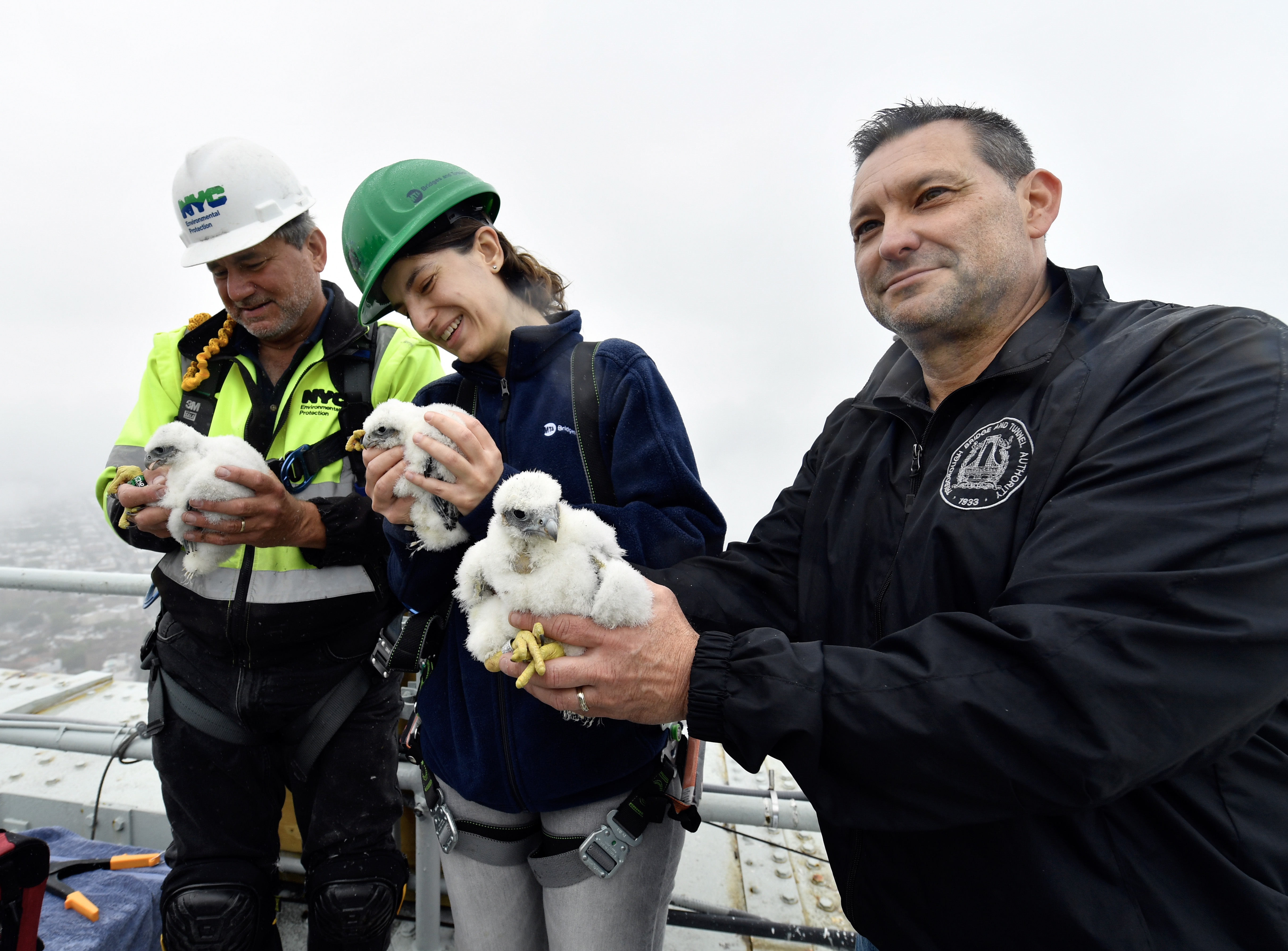Falcon Chicks Hatch Atop Brooklyn Tower of Bridge
Chicks Banded for Endangered Species Conservation Effort
View B-Roll of Chicks; View Photos of Chicks
Metropolitan Transportation Authority (MTA) Bridges and Tunnels today announced that three healthy peregrine falcon chicks have hatched in a specially built nesting box atop the 693-foot Brooklyn Tower of the Verrazzano-Narrows Bridge. The hatchlings, two females named Genevieve and Marcella, and one male named Skyforger, were recently banded for wildlife monitoring. Banding is part of conservation efforts to protect the peregrine falcon population, which remains on New York State Department of Environmental Conservation’s endangered birds list.
Each year, towards the end of May, New York City Department of Environmental Protection research scientist Chris Nadareski climbs to the top of bridges and puts identifying bands on the falcon chicks. This helps wildlife experts keep track of the number of peregrines in the city and identify them in case they become sick or injured. The bandings took place on May 23 when the falcon chicks were about three weeks old.
MTA Bridges and Tunnels has been part of the state nesting program since 1983. The agency provides a nesting box for the falcons at each of the bridges but otherwise does not interfere with the birds, particularly during nesting season. Falcons mate for life and generally return to the same nest to hatch their young.
Peregrine falcons were first placed on the endangered species list after they were nearly wiped out in the 1960s due to pesticides in their food supply. Urban falcons like to nest atop bridges, church steeples and high-rise buildings because they provide an excellent vantage point for hunting prey, including pigeons and small birds.
The banding process is performed in accordance with agency procedures and does no harm to the chicks.
